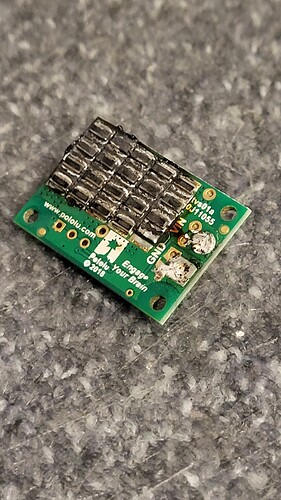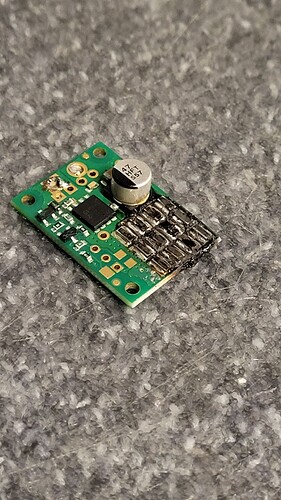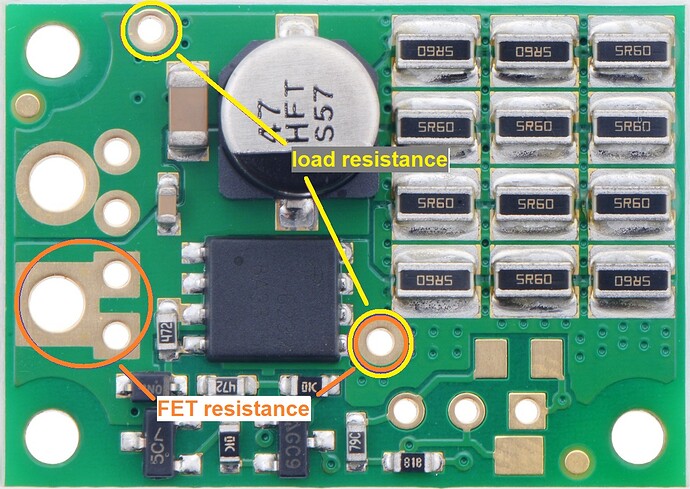Thanks for the explanation Claire.
I burned up another shunt regulator yesterday.
This time it was a #3780 with external 3 Ohm 100W resistor. I also added a trim potentiometer and adjusted its resistance so that the shunt becomes active at 26,4 V.
To achieve the voltage value I connected the shunt regulator to a power source where i can set the voltage as well as the max current. I set max current to 30 mA not to break anything. Then i played with the voltage and pot resistance until the switch from “constant voltage” to “constant current” happened at 26,4 V. I made sure that the 30 mA was only flowing for about a second each time.
I wanted to closely monitor the temperature of the shunt regulator, especially as it took so long to get it all assembled and adjusted. So i applied a very restrictive PWMmax value to the motor driver, so that if the shunt got hot, i would have time to react. Well, it did get hot. Because of the relaxed settings, this time there is hardly any visible sign of damage. I switched everything off as soon as i felt the resistors got hot and measured the resistance of the resistors as well as the FET, like you described.
Turns out the resistors themselves have exactly the expected value. But the FET seems to be damaged as is it only has about 10 Ohms. I dug out one of the #3775 shunt regulators i burned up a couple of days ago out of my trash can and repeated the same measurements. Same situation here (resistors with expected resistance, FET only with a couple of ohms).
It seems like the FET was the part that died first and then short circuited the board, killing everything else.
Do you have any advice on this situation? Why are my FETs dying? What can i do to prevent that from happening?
I just build another #3780 shunt regulator (added external resistor and trim pot, and adjusted trim pot make the shunt work at 26,4 V). I checked the FET resistance at it was about 70 kOhms, constantly rising. I guess thats ok.
Then i applied a tiny bit more voltage, so that the power supply switched to “constant current” mode, limiting the current to 30 mA. I measured the voltage across the FET and the resistors found that 100% of the applied voltage dropped off across the FET and 0V across the resistor.
Is this normal? Doesnt that mean that all the heat will be dissipated in the FET and the resistors do nothing until the FET died?



